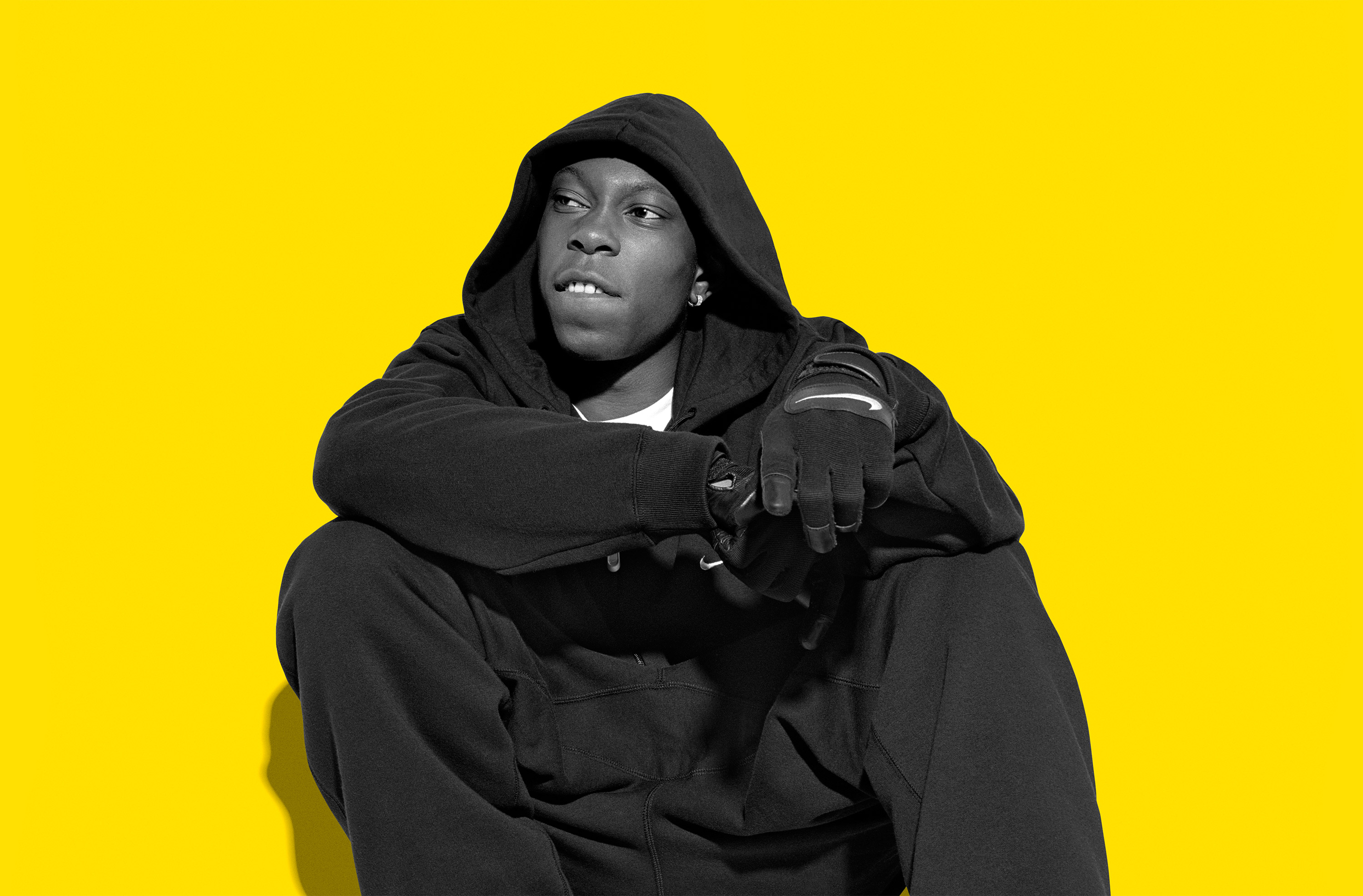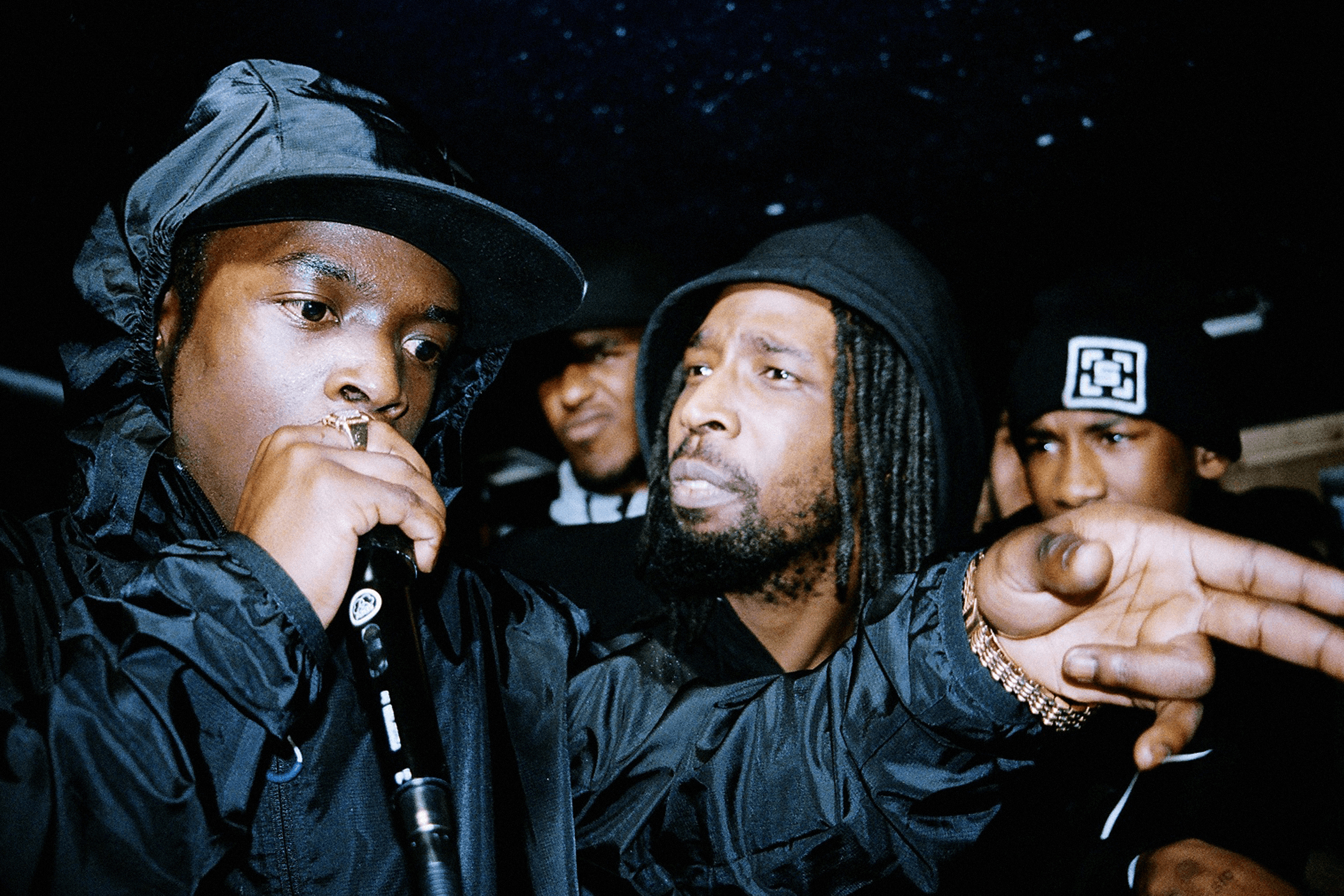Interview: Dizzee Rascal’s Music Teacher
Dan Hancox tracks down the mentor thanked in the Boy in Da Corner liner notes
Dizzee Rascal’s debut album, Boy In Da Corner, left a seismic mark on the UK music scene in 2003. It both introduced the world outside a few London pirate radio aerials to grime and made a star of its 18-year-old creator. But there was one man who wasn’t surprised by Dizzee’s critical and commercial accolades: Tim Smith. The clue had been there all along, buried in the credits on Boy In Da Corner’s album sleeve: “Special thanx to Mr. Smith, da best music teacher Langdon Park ever let go (you fools). I’ll never forget da way you kept the faith in me, even when things looked grim.”
Formerly the Head of Arts at Dizzee’s alma mater, Langdon Park School, Tim Smith has since retired from teaching. With a name like Tim Smith, Dizzee’s mentor was virtually un-Googleable in 2016. The trail went cold well over a decade ago, when he was last identified teaching at another school in inner London. But I tracked down Smith in his retirement and discovered that he now sits on the boards of the music-based social enterprise Bigga Fish, as well as the legendary underground radio station Rinse FM. I caught up with him in east London, three miles from the school he began teaching at back in 1994.
When Dizzee (AKA Dylan Mills) joined the school at the end of 1999, was it uncommon to teach secondary school music on PCs?
Oh god yes, very unusual. To be honest it was light-years ahead of what anyone else was doing. Although years before that, I actually taught kids to write music in BBC Basic, that would have been around 1984-85. They didn’t have music keyboards, but they actually coded it! In the mid 1990s we finally started to establish more IT in music, but it was still rare. Programmes such as Cubase and Notator, which you ran through Ataris, were pretty good. And then Yamaha brought out an MSX computer, and the MSX and the Commodore 64 were the first computers to have a built in Midi port, so you could connect the keyboard, and do things that way.
The school didn’t have much money, but we made a link with Morgan Stanley, who were happy to dispose of their old computers for nothing.
Nobody else had written those really sharp, intricate beats, but sometimes just dropping out to leave... nothing. That is really the hardest thing in music, to create space.
What would Dizzee have been using back then?
Working on Cubase with Microsoft computers. Because it was relatively cheap, but very user friendly. Students got on well with it. Dylan had already been excluded from two schools, and he joined a group in Year 10, around about half term [aged 14]. This lad turns up halfway through term, a typical new member of a group, with a hood up, very guarded. I told him we were using Cubase, making some 2 bar loops. He knew how to use it from his previous school, and so I left him to his own devices.
After about 20 minutes, another teacher said “you’ve got to come over and hear this.” Most kids are happy to just get a few bars down, but Dylan had already zoomed ahead. He could get information down very quickly, but what was most unusual was he would then spend a lot of time refining it. A lot of youngsters wanted to create music, but weren’t as interested in that total refinement of a sound. Dylan could string a complex rhythmic pattern together in 20-30 minutes, and then be quite happy to spend a week refining and editing.
And if he didn’t know something, he was happy to ask, and as soon as he’d got it he’d say “right, okay, you can leave me be now.” And that was great.
Mobile phones were new-ish, and he was keen on the sounds from games machines, and ringtones. He would often come in and say “I’ve got this ringtone, can you work out what the notes are?” And so he would sit and listen and work it out, and sometimes say “that’s not quite right.” He had an amazing ear. By the end of his time at Langdon Park he was able to knock out these really intricate, clever tunes.
His beats were just awesome. Nobody else had written music like that, with those really sharp, intricate beats, but sometimes just dropping out to leave... nothing. And that is really the hardest thing in music, to create space. That showed particular talent, especially for someone so young – you can hear it on Boy In Da Corner – to know that you shouldn’t overload a track. Often when people start composing, they add and add and add. It’s not the right way.
Was there evidence of his lyrical skill at that time?
Yes, certainly. He would lay down tracks at school, and then we would record the track onto MiniDisc, and then play the MiniDisc back, and then overdub lyrics. Instantly you’ve got a young person who can not only create lyrics, but create lyrics with incredible rhythm. And that’s what made Dylan head and shoulders above anybody else.
His vocal cadence seems to vary: It can be melodic, it rises and falls, speeds up and slows down, in a way that compares with the beats.
It’s unbelievably rhythmic, and complimentary, all the way through Boy In Da Corner. A lot of others were rapping, but no-one else had done it quite like that. For me, American rapping often tends to be a bit too heavy; a bit too much going on. Less is more. I love minimalist music, so my favourite composers are Philip Glass, Steve Reich, John Adams – and I used to lend Dylan a lot of these albums on CD. So he would listen to these. Whether it influenced him, I don’t honestly know. In a way, I doubt it, because part of the reason he stood out, is of all the students I taught, there were so few who were so completely sure of what they wanted to do even before they come to class.
On one occasion, Dizzee met Courtney Pine at a workshop at Langdon Park. The gig was organised by Serious and had DJ Pogo and MC Sparky along with Courtney. After the gig I introduced Dylan to Courtney and Dylan asked if he could sample some of his melodies. Courtney was very keen on the idea and gave him his mobile. A year or so later I asked Dylan if anything came of it and he admitted that he lost his phone number and never managed to make contact. It’s another example of how he could imagine the music he wanted to create.
I taught for 37 years, and I never once met anyone like that. I remember saying “how do you do that?!” And he’d say “well I hear it, so I done it.” It was just so natural, so instinctive to him – he was writing songs that were already in his head.
I’m a great believer in learning through discovery – I think it’s better to show a group of students what a piece of equipment could do, and give them some time to see what they can do with it, rather than making them follow a pattern. Probably, if I was observed teaching, it would be regarded as an inadequate lesson.
Why, because they need to see you lead the students in a particular direction?
Yes, exactly, because they need to see teaching, rather than being hands-off, and offering guidance. Which is ridiculous, isn’t it, for art? You need to recognize talent and allow talent to flourish. But it’s one size fits all, one style of teaching must fit all – it’s crap!
I remember we had a Year 7 music class, and he would help teach... so these 11-year-olds [learned] how to do Cubase, from Dizzee Rascal.
Famously, Dizzee’s disciplinary record almost got him expelled from the school completely, but your music classes became his salvation?
That’s right. Eventually, he was excluded from all of his lessons at Langdon Park. This would be towards the end of Year 11 [the end of compulsory education]. And really and truly, if you don’t know it by March, you aren’t going to know it by the time of the summer exams. The headmaster [principal] Chris Dunn would probably have had more than enough evidence to say “we can’t cope with you anymore” and expel him. But Chris wouldn’t do that. Because he knew he’d already been expelled twice, and statistically, he knew that if it happens a third time, it could be a very bad downwards spiral. So against all the odds, Chris Dunn asked me “can he go and work in the back room with you?” I didn’t even know he was there! The only time I knew he was there would be if he would ask “I’ve got this bit, how do I connect it to this bit?” Just a 20 second question, and that was enough for the next few days. Quite unusual.
On a Friday morning I remember we had a Year 7 music class in (11-12 year olds), and he would help teach... so these 11-year-olds got very very good tuition on how to do Cubase, from Dizzee Rascal, who was also simultaneously creating the sounds that would lead on to Boy In Da Corner.
And before I left the school, Dizzee and Wiley came back to the school together, to say, you know, thanks.
Did they come in to speak to assembly or something?
No, it wasn’t quite like that, it was more informal. They both came in, and I said to the class, “this man really did make some astonishing music.” That would be about June 2002. Around that time. He might have just been on the verge of signing for XL actually.
How much similarity was there between Boy In Da Corner and the material you were hearing at school?
The album was a significant development of what he was doing at school – for example, we couldn’t do sampling at Langdon Park, so those elements would have come later – but it was undeniably Dylan. The giveaways were the very, very sharp beats, the fills using things like cabasas. He would also compose about 80 BPM, most youngsters were into about 120, but he would have a deliberately slow beat, so that you could sub-divide each beat, not into 2 but into 4. So that’s where you get the really sharp, interesting sound. And the way he would do it is, draw it in, so it was filled, and erase certain bits of it, so it had a gap. That’s how those unexpected gaps in the music came in.
Did you stay in touch after Dylan left school?
I left Langdon Park in 2002...it would have been October, so just before it all went crazy for him. And Chris Dunn took me in his office, and he already had a file of press clippings then, saying: “this is going to be the next big star.”
His first vinyl release, I Luv U, was on a white label. I remember hearing it and thinking, “good God, this is really, really good.” Quite spectacular, especially for a youngster! It was an astonishing piece of music. I don’t know where he’d mixed it. His mother sent me the pre-release experimental two or three versions of it. If he hadn’t done “I Luv U,” you probably wouldn’t have had a lot of the other artists coming through emulating that style.
I still have 33 tracks he made back then at school! They’re completely backed-up for posterity – but I’m afraid I couldn’t pass them on to anyone.

